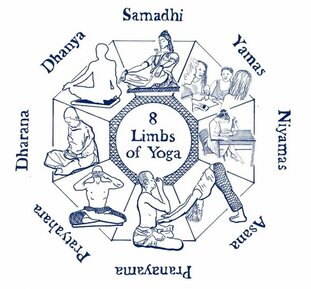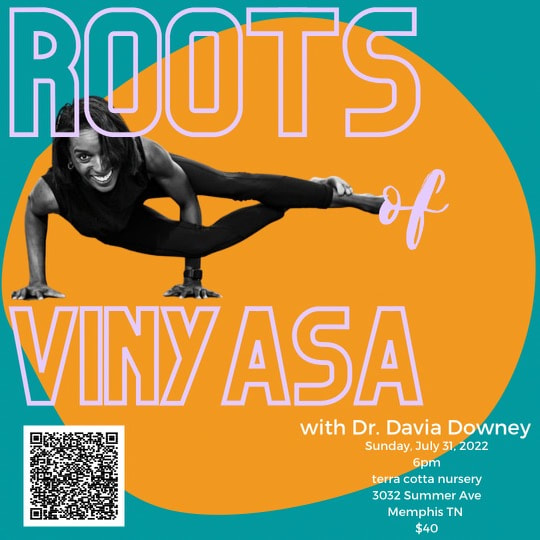 Some beginning yoga students often come to a studio seeking to look like an image they've seen on social media. Beautiful, lithe bodies with dancer-like extension so many new students think that yoga will help with this outward presentation of their bodies. These kinds of students are often confused when the teacher says something along the lines of, "I don't care how it looks, I care how the posture feels to you." during a class. Other teachers will says things like, "Yoga practitioners can be too flexible, but they can never be too strong." which can also throw new students for a loop. So what gives? Why are so many yoga teachers so focused on strength as opposed to flexibility? Let's break flexibility down from a physical perspective and then talk about how strength is the foundation to gaining more flexibility in your body and not the other way around. Harvard Medical School says that flexibility allows you to gain full range of motion in your joints which improves your ability to reach for things, bending over to grab something from the floor, or to stoop under things if needed. Flexibility keeps you nimble as you age. Patanjali, the author of The Yoga Sutras talks about Asanas (postures) as a combination of effort and ease. The effort comes from strength, be it strength of concentration, strength in the muscular body, or strength in the opposition between muscles that are relaxed and those that are working in any given pose. The point of flexibility here is clear--flexibility helps with easing into a posture, but strength is needed to keep you in the posture and to protect the body from injury. From this explanation we can see how focusing on a pretty extension in the toes, or flourish in the hand in a yoga pose actually does very little to build strength--it may look pretty to an observer, but ask yourself is it the hand flourish, pointed toes, or anything that externally "looks" like flexibility building the strength that you need to hold the muscles in place? Does that dancer-like "finished pose" engage the muscles in a way that you can hold the posture for longer than a breath or two? Finally, are you as a student thinking through which muscles are relaxed, which ones that are engaged, and can you use those muscle to deepen the posture? If not, focus on building strength as you practice and pay close attention to what your body is saying as you move. As we consider Asana and its place in the Eight Limb Path of Yoga and through our study of the Yoga Sutras and other associated yogic texts we discover that the whole point of asana is to prepare the body to sit in a meditative state. Therefore, flexibility is only one component that allows you to sit. Without a strong muscular base, sitting for a long time becomes very difficult. Effort, ease, flexibility, strength are the different sides of the same coin. Your body and your practice will develop and deepen the more you focus on both.
0 Comments
I am so incredibly stoked to be collaborating with Candace of The Yoga Kickback to bring you a special workshop that will cover the basics of Ashtanga and Vinyasa. It will be hosted at Terra Cotta Nursery, a super dope space filled with super dope stuff. Refreshments and Q and A will follow so click the link (scan the QR code) and signup!
Many students who are new to Ashtanga get confused by class names. This post is meant to help demystify some of many ways those who practice Ashtanga refer to different kinds of classes.
First, we wouldn't be doing service to the long history of yoga and the Ashtanga practice specifically, if we didn't discuss the city of Mysore (or Mysuru) in India. Mysore is located in the Karnataka state and is located in the southwestern part of the country. It even has a beautiful palace as Mysore was the seat of power and served as the capital of the region from the 14th to early 20th century. You can find out more about the area from Encyclopedia Britannica and see beautiful pictures of the palace. It is also the birthplace of Ashtanga Yoga and you will find many shalas and studios to practice if you ever have the opportunity to visit. Tirumalai Krishnamacharya known as the father of hatha yoga and guru to Sri Pattabhi Jois, father of the Ashtanga method lived and taught here in the 1930s and 40s. I'll do a deep dive on Krishnamacharya and Pattabhi Jois in another post soon. Now to understanding what you’re signing up for when you take your first class. When signing up for an Ashtanga class for the first time you may be confused at the class description or the verbiage used to describe the class. A few terms to know are provided below: Mysore-style: Mysore style is a class that will not be led by a teacher. Instead, you come to the shala or studio at the appointed time and take practice. You can bring notes if needed or see if your studio has handouts available. You can practice primary series or ask your teacher about postures from other series as well to see if they think you are ready to try them out. During class, your teacher observes your practice and may provide physical or verbal adjustments and you can leave once you've finished your practice for the day. As you become more adapt in your practice and understand the primary (or intermediate) sequence, you can essentially "practice what you need" on a given day. Some studios close on Moon Days (i.e., days with Full Moons or New Moons) as a way to honor the energies of the earth as well as to give students a physical break from their practice. Mysore is one of my favorite styles of class to take as I really appreciate the self-paced nature of these classes. When I'm working on a complicated posture and have questions or I'm working through an injury or illness I find these classes particularly helpful in that regard. Led-style: Led style classes can take two forms (short or full). A short (sometimes referred to as Half-Primary) led primary class may have the teacher practice alongside the students and in other shalas or yoga studios, the teacher may call the postures and count in Sanskrit and provide verbal and hands-on assists and move around the room observing while you practice. A full led primary class will typically last 75 minutes while a short form class may last anywhere from forty-five minutes to an hour depending on the number of postures the teacher calls. Ashtanga-Blend: Some studios have taken some liberties with the primary series and add music, heat, or speed up the traditional practice for more of a "vinyasa" style feel. These classes are great for beginners as they feel much like a typical yoga class. You may not get much tradition in these classes, but they are fun! One thing to note, traditional Ashtanga teachers (I count myself as one of these) will follow the same format in class regardless of whether the class is Mysore, short or led. All classes start with an Opening Chant/Invocation, followed by Asana (Postures), and class will close with Savasana followed by a Closing Chant. You are not expected to know the chant as a first timer but in time you may find yourself becoming fluent in a few words of Sanskrit, which is pretty neat! I'll be doing a blog post on the chants and their translations in a future post so keep an eye out for that one. For now, know that the opening and closing chant are meant to do two things. First, chants call the class to order and at the conclusion of the opening and closing chant you will hear Om sung three times. This is when you know the asana portion of the class is about to begin. Second, chanting (singing) creates vibrations in the nasal and throat cavities which has been shown to be beneficial in a myriad of ways. I like to think of chanting as the workout for my throat BEFORE the working out of my body and I find it very calming. There's no right way to chant, just give it a whirl! Your mind will thank you! My style of teaching is Mysore, Led Primary, and Short Form Primary so if you'd like to explore these styles, head on over to my booking page to schedule! My upcoming Ashtanga for Beginners Workshop is coming up on June 18th at 9 am. This hour and a half long session will be a led short-form practice followed by Q and A so bring any and all questions about Ashtanga. I will also have handouts for you to continue your studies independently! Melissa Meadows Yoga is hosting the event at her lakeside studio in Memphis. Refreshments will be served. Registration costs $25 per person. You can book and pay for your slot here. Once you have paid I will provide the address via email.
Yoga mats come in different sizes, use different materials, and have different heights. So how should you choose your yoga mat? Follow these tips from FitSRI!
My yoga mat of choice is the Chakra Aura Mat from Yoloha Yoga which is a USA based company located in Charleston, South Carolina. I love the chakra design, the grippiness of the mat, and it's absorbency. It serves me well during a sweaty, hot yoga sesh and comes with a carrying case (separate purchase). I don't get a commission, I just love the mat and the sustainable materials used throughout the manufacturing process. Plus, it's locally owned and I love that! |
AuthorThis blog contains interesting articles, observations, and general musings about yoga. Archives
September 2022
Categories |

 RSS Feed
RSS Feed